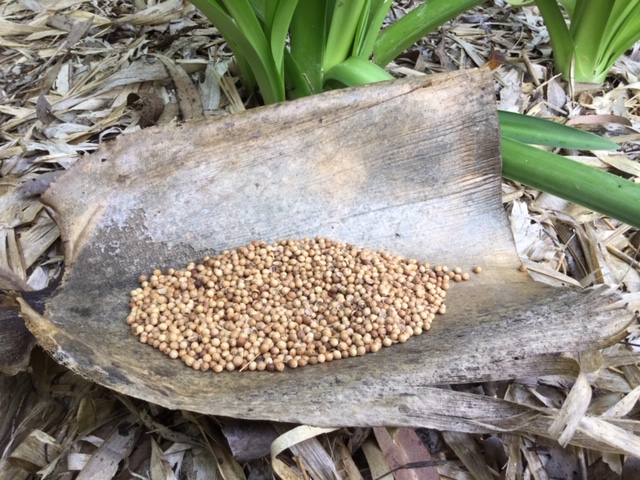
Seed saving goes back to the dawn of agriculture so we are looking at very ancient traditions. Seeds were carried by nomads and planted where they stopped for spring, summer and autumn. Many of their seeds were sacred to them and very important for their ritual life.
I was taught about seed saving when I was 4 years old my Grandmother as my Mentor. She had a compost heap. We got cow manure from an uncle out of town. We collected lots of seaweed at the nearby beach. We got leaf litter from the nearby forest where we also filled up our water containers from a sacred mineral spring.

Grandmother had a beautiful garden full of edible stuff and lots of herbs and flowers for medicinal use. She taught me how to save seeds and she had a small personal seed catalogue full of information about when she planted what and what the bees were doing in August. She kept the seeds in an old shoebox in the cellar in the basement of the house which was very cool all year round.
My Grandmother kept her seeds in recycled envelopes. She had scribbled a lot of information on each envelope and since I was only four years old I made her read what was written on the envelope. First of all it was the name of the seed and for how long Grandmother had been growing this seed. Some she had for 40 generations. Gosh Grandmother must have been very old or she had gotten the seeds from a friend or even her own mother.
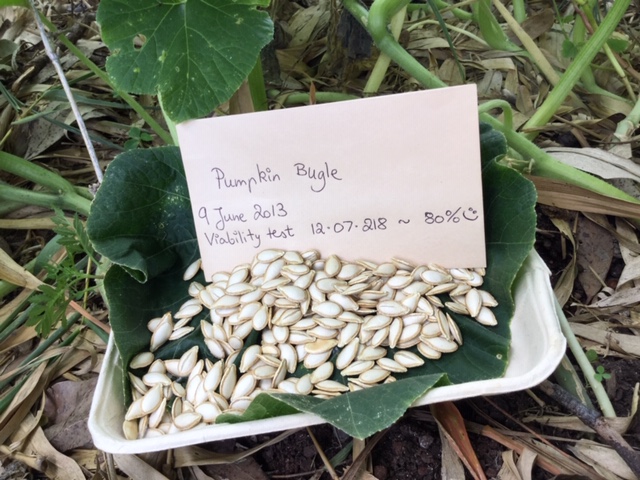
On the packet of green pea was a beautiful drawing of the plant and pods. “These seeds are from my aunty Thura she lived in the same village as my mother and they did some gardening together. Seed first planted in 1914”. Because Grandmother used recycled envelopes they all came with a pretty stamp. Lots of the stamps were from Canada as it turned out that Grandmother’s brother made his way to this country far away to start a new life.
Sometimes when Grandmother was babysitting me I would sit for hours and just dwell at the stamps, drawings and text. I let my imagine roam wild but found it difficult to understand that a tiny seed like that of a carrot could turn into a plant with a green long top and a beautiful orange root about 30 centimetre long. Sometimes I thought Grandmother was pulling my legs until one spring day when the frost had gone Grandmother took me into the garden and we sowed seeds together. It was still pretty cold so Grandmother had a small wooden box with a glass lid sitting on top of the soil. This is where we sowed the first seeds. The wooden box worked like a small green house. A week later the seeds germinated and I was so stunned and I still remember the emotions that flooded through my body. That of amazement and totally bliss!
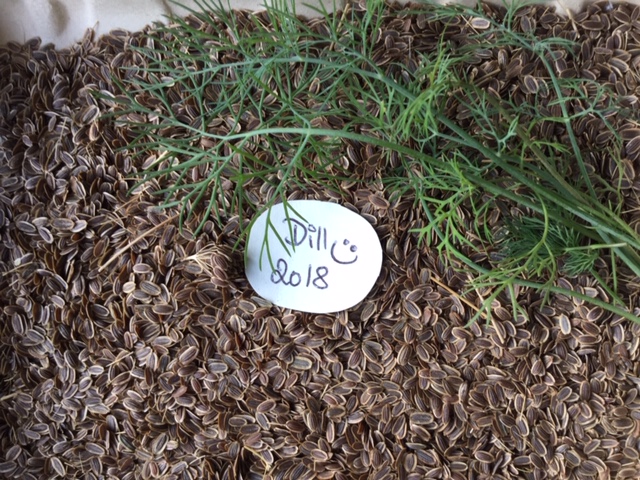
I begged my Grandmother to sow some other seeds to see if they would perform the same way. They did and some turned into beans, others into flowers and herbs. I was sold and soon I had my own small garden within the garden.
One day I thought to myself: “Why not mix some of Grandmother’s seeds together. A few seeds from each packet and see what will happen. When Grandmother found out that I had actually mixed seeds which I had been told not to do Grandmother got rather upset. Anyway she never was upset about anything for very long so we sat out to find a suitable place in the veggie garden to plant my new seed mixture. The seeds germinated and grew beautifully together and that’s when I invented companion planting. A wild and wonderful edition it turned out to be.
Strolling through the vegetable garden with Grandmother I could feel she was very proud every time we stopped at my mixed seed patch. She told me that she observed that this part of the vegetable garden grew better than the rest and she said that she thought that the bad bugs as she called them those that come to feed on your yummy vegetables seemed less successful attacking the plants in this mixed patch. Her theory was that the insects got confused when plants were mixed together in a wild order and not growing in rows. It was Grandmother’s impression that insects would identify plants by shape and smell and since the plants were one big mixture it was difficult for the insects to find what they were looking for. She also explained that some plants attracts beneficial insects others repels the bad guys. It is amazing what knowledge a Grandmother embrace.
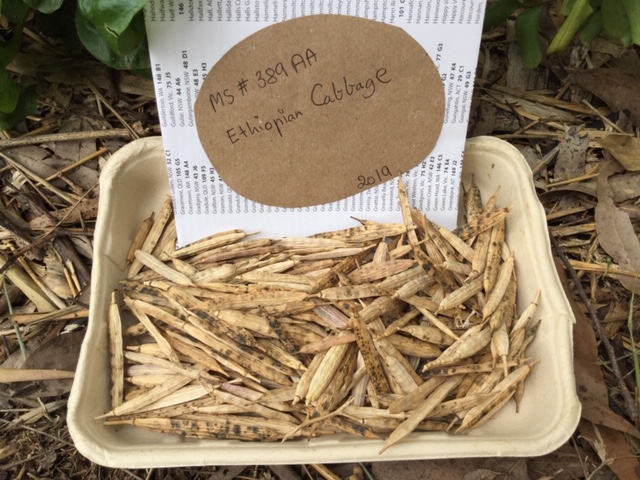
Grandmother also kept Carrots and Swede in boxes of sand. Apples for cooking were stored in wooden boxes in the garden under benches waiting for the winter frost they needed to sweeten up.
I am a keen seed saver so my seeds over generations are acclimatised to my local area and climate. Peder and I belong to the local seed savings network The Mareeba Seed Savers and Garden Group which we founded in 2009. We are a part of the Australia wide Seed Savings Network which was founded by Michel and Jude Fanton based in Baron Bay NSW in 1986.
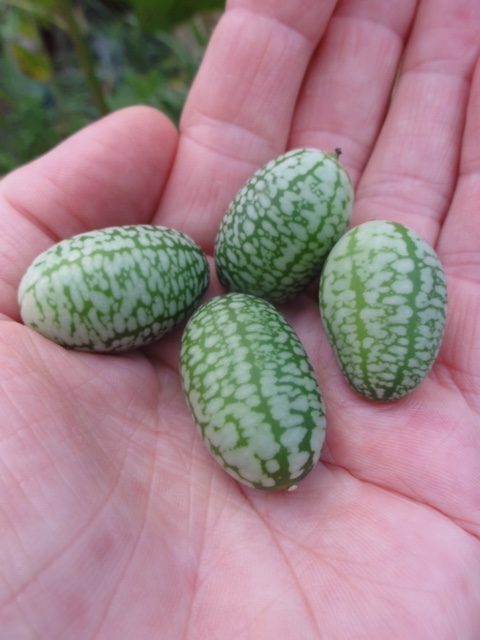
It is magic to hold a small seed in your hand knowing that this seed has a memory and knows exactly when to germinate once planted. It also knows exactly what it is going to be. A carrot seed will turn into a carrot as long as it is not genetically manipulated. Not like us humans. We have a dream as a child what we like to do in life. I wanted to marry a Garbo man because I saw what people put in their garbage bins. (I am a bit of a Bower Bird collecting lots of stuff which I then recycle or up cycle or “repurpose”). Growing up I changed my mind to become a furniture maker. Then I worked out it was more fun to be a social worker and I ended up a textile artist writing books on different subjects but nowhere near textiles. A most wonderful journey it is!
To me saving our open pollinated seeds is all about securing a healthy future for us, our kids and their kids to come. To know that real food, high in quality and nutrition will be available makes me sleep well at night and think clearly during the day. Life becomes a pleasure and health well maintained. We can live a balanced life and be happy souls with busy green fingers and seeds coming out of our ears.
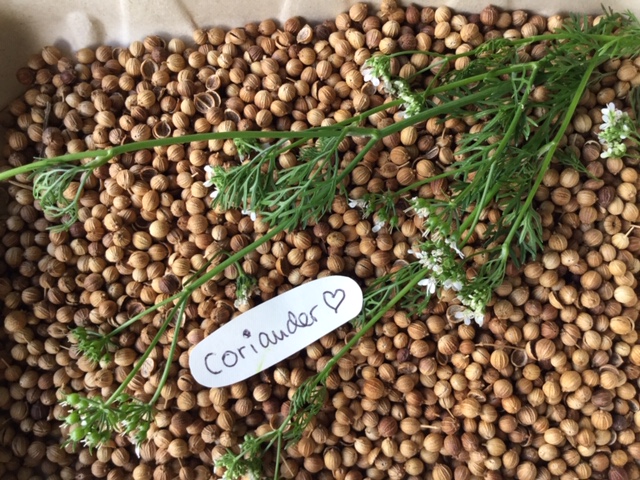
Saving our seeds from our gardens and farms and sharing them with our friends and local network means that we build bio-diversity which is essential to our survival. This way we can control what we eat and what we are and not have to put up with what the multinationals wants us to eat. If you eat rubbish you will think rubbish.
Saving seeds from open-pollinated vegetable, grains, herbs and flowers enables us to maintain the traditional way of growing food. Plants that reproduce through natural means tend to adapt to local conditions over time and evolve as reliable performers.
All over the world we are losing seeds by the minutes. Since the turn of last century we have lost 90% of our crop diversity. This is scary! When we lose seeds we lose our traditional way of eating. The seeds disappear for various reasons.
In Denmark (where I come from) it was illegal for some years to be a seed saver. You could not swap seeds with your friends! This law was deregulated taking effect in 2015 allowing people to swap seeds. According to the change in law, the Food and Environment Ministry defines commercial use of seeds as “intended for production of commercial crops”. Thus, the sale and exchange of seeds for and between households and organisations (whether they be online exchange, group, social projects or museums) is now legal. It is one of the widest-ranging interpretation of seed sharing currently (as per 12.0.4.2017) on the books in the EU and so Denmark has been transformed from one of the most restrictive countries to one of the most open in terms of non-commercial seed exchange.
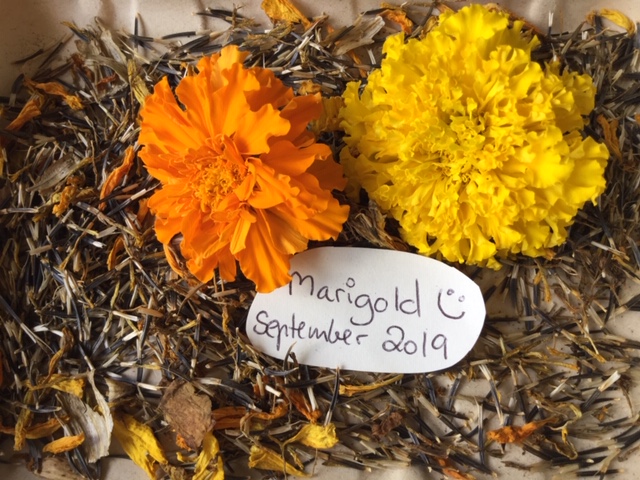
I read “Reuters News” on the 21th March 2018: Bayer is now the sole owner of Monsanto Company as per June 7th 2018 sold at $ 62.5 billion. Bayer is a company specialising in chemicals. We are now into the Agrochemical industry. Before it was agriculture then agribusiness and now we have reached Agrochemical. The tie-up is set to create a company with control of more than a quarter of the world’s seed and pesticides market. This bit of information is enough for me to get even more serious about saving open pollinated seeds and growing an organic garden however small.
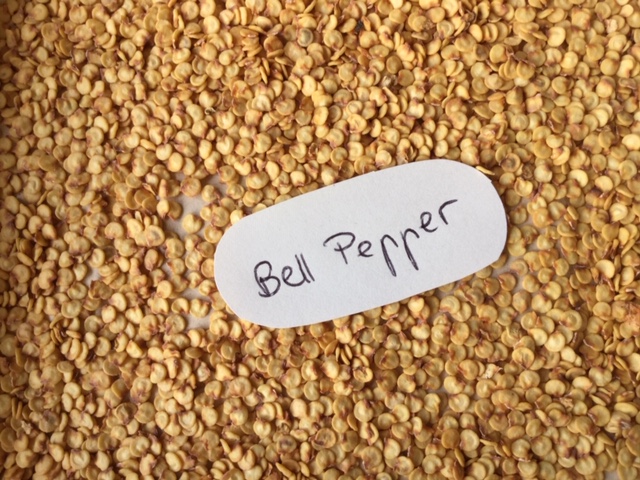
I thought to make a short list describing how, when and what to do in regards to seed saving. To be honest there are that many books out there in the big world. Why reinvent the wheel. There is a fabulous book called “The Seed Savers’ Handbook” by Michel and Jude Fanton. It gives detailed information on the basics of how to do what. A great collection of individual plants is described in this book when to grow and so forth and all these plants will grow in our local tropical area. Great stuff as many a garden book is not suited for our part of the world. You can also visit www.seedsavers.net to see what else is on offer from The Seed Savers Network.
To catch up with Mareeba Seed Savers and Garden Group you can create a Facebook account and connect to the group. Don’t ask me how it works but I should put it on my bucket list of exciting things to learn to do in 2020.
I have compiled a list of plants that I have sown over the years in different gardens in Mareeba area. When you look at the list remember that what I sowed in e.g. January could very likely be sown in February as well. You can roll one month into the next so to speak. Use your intuition and see what works for you. Here is the link to “When to Plant/Sow what in Mareeba Region”
I have also compiled a list of plants that I have grown all year round in Mareeba area. I am sure much more plants will grow all year round. This is my experience. Here is the link to……. “What grows all year round in Mareeba Region”
I am a great believer in Companion Planting and I have compiled a list of my own personal observations of what plants like to grow together. Have a go yourself and again follow your intuition and see what works for you. Here is the link to….. “Companion Planting in Mareeba Region”
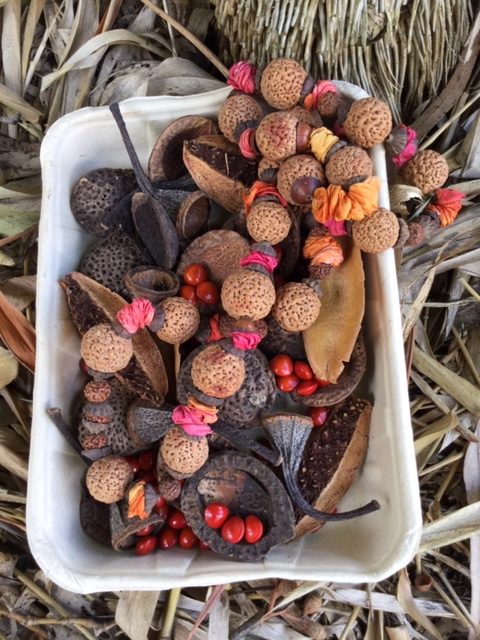
yay ulla, thanks for another wonderful article, you are such a creative writer!! <3
thank you for taking the time to put some of your wonderful experiential knowledge and stories of seed saving into an article to share with us all…and bless your grandmother for her beautiful influence on your early life, instilling your love of the garden and all interconnectings…people can also find you talking about interesting things in a four-part series on kuranda tv!! here's part one and go from there ~ https://youtu.be/N9lKvPrIE78
Ulla, what a magnificent post! Thank You for sharing the story of your young life with your Grandmother, how blessed you were to have shared time and experiences with her as you did. I also can relate to your feeling of connecting with the magic of holding seeds and acknowledging the potential each one holds inside…When I think about that something happens in my body….I can’t really explain it but, when I open a fruit for example and see all the seeds inside (like a papaya, watermelon, tomato or a red capsicum) and I think about the POTENTIAL that each ONE of those seeds has to grow and produce more fruits, with more seeds and when that continues in an exponential, never ending way, using the memory of the seed…..it totally blows my mind!! Let’s keep seed saving and sharing seeds with friends, old and new. Let’s plant more ‘seeds’ in the thoughts of others to get out and start growing some of their own food, even if it’s in a small pot on their balcony…Let’s help strengthen the connection between people who love to get together and garden and connect with Nature. ~ THANK YOU for your stories and your presence in my life.
A wonderful article Ulla, and so timely for us now in our topsy turvy world. And what a wonderful wise woman your Grandmother was! And how well her granddaughter learned and then used her own intuition built on such love and respect! An inspiration to all Grandmas. I will help spread your news…
Thanks for another wonderful story. The pictures are beautiful. My Grandmother, Elsie, was never happier than playing in her garden with her bum in the air. She buried the scraps and burned the papers and dug it all in. Permaculture was not a thing back then but she had invented it herself and food reproduced itself everywhere. We are both very lucky to have had such inspiring mentors.
Such a wonderful story and precious memories.
Thank you for sharing.
Lovely to read your article. I have just moved to Tolga from Cairns and I am getting very excited about my new creative hobby , gardening. Nourishing for the body, the mind and the soul. I like you were as a little child, so excited by my first grown cucumber, my first eggplant my first miraculous zucchini. Love it. I will enjoy reading all the links you have provided. Thankyou for sharing.
Regards
Claire.